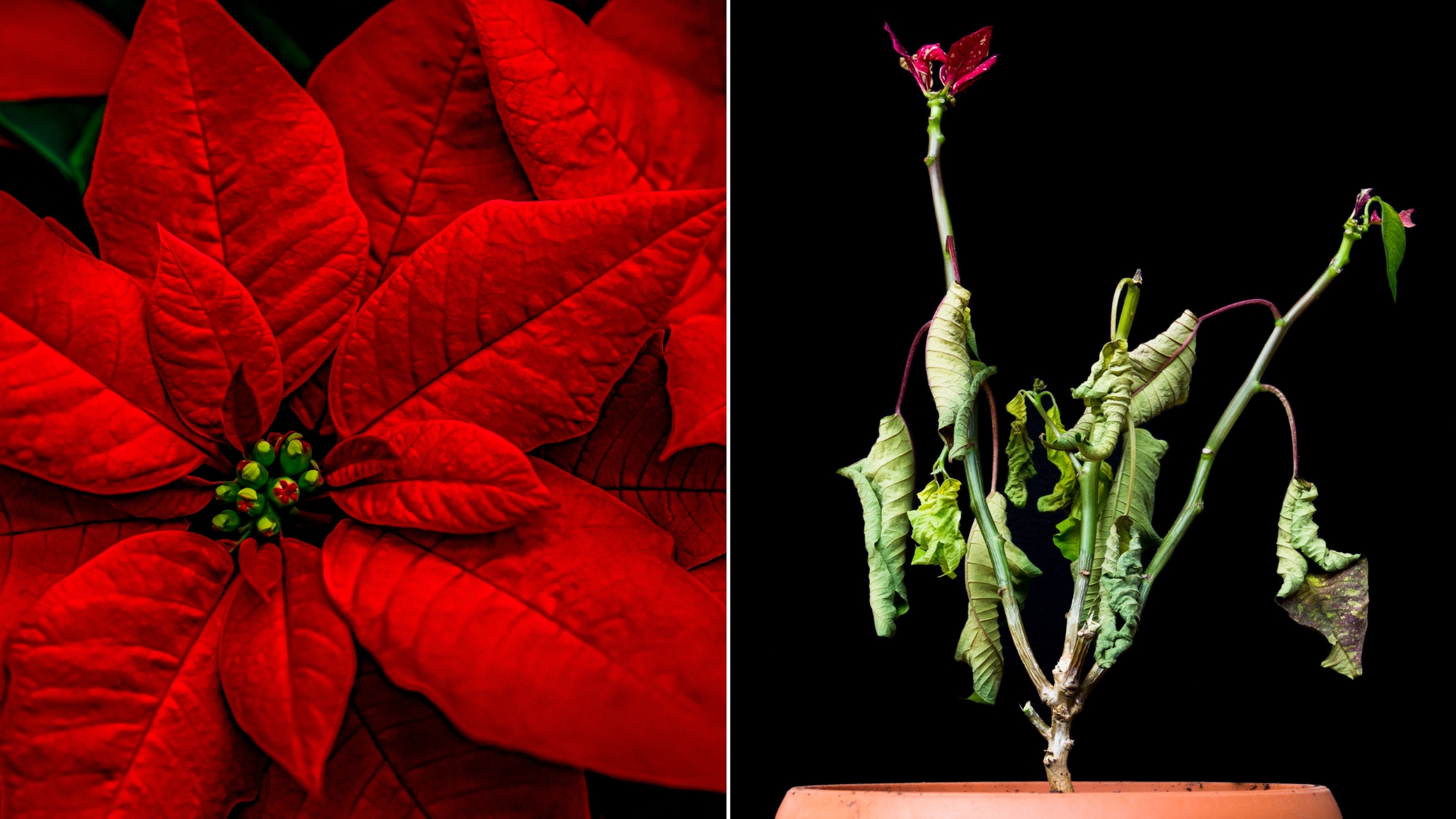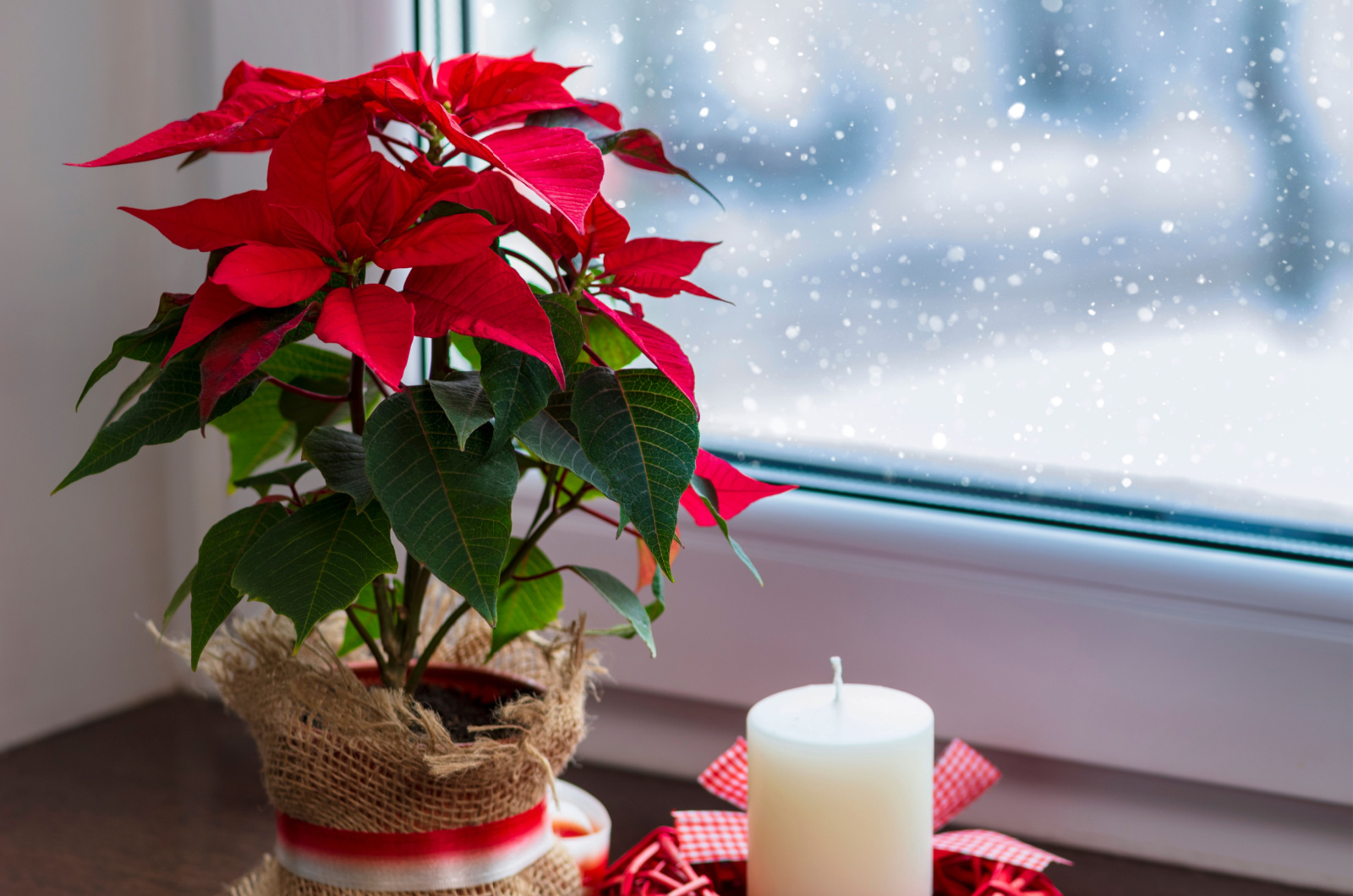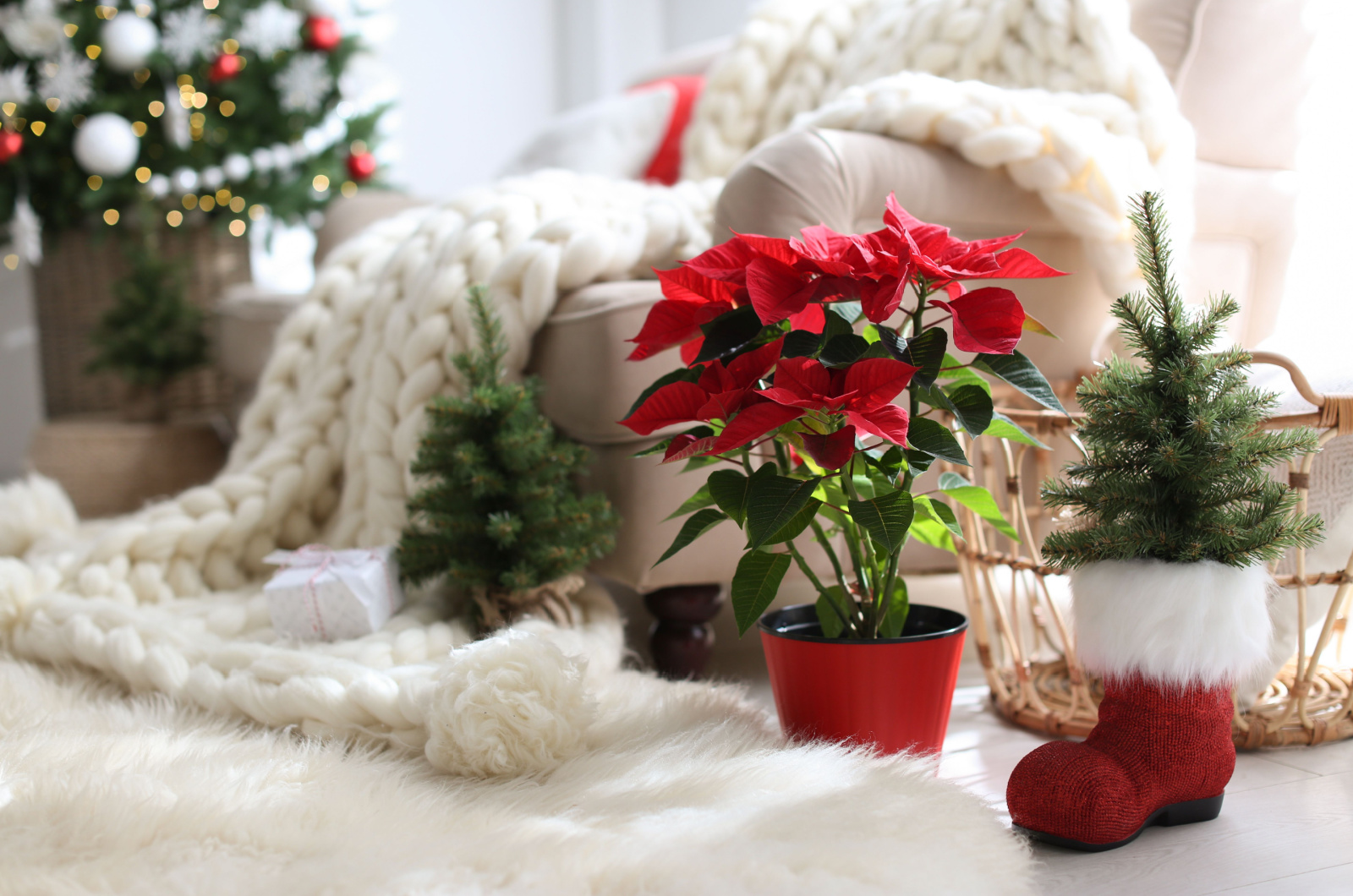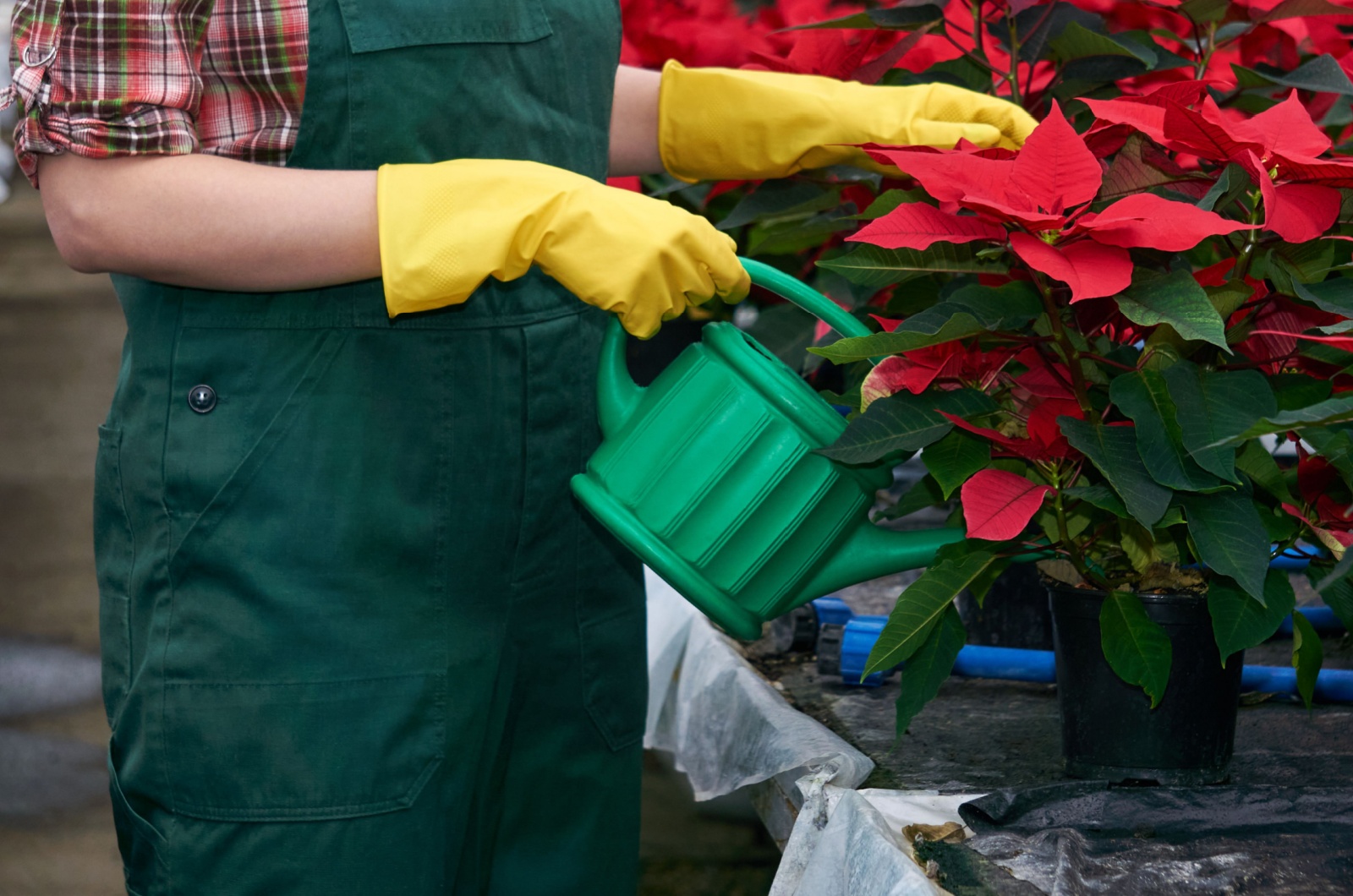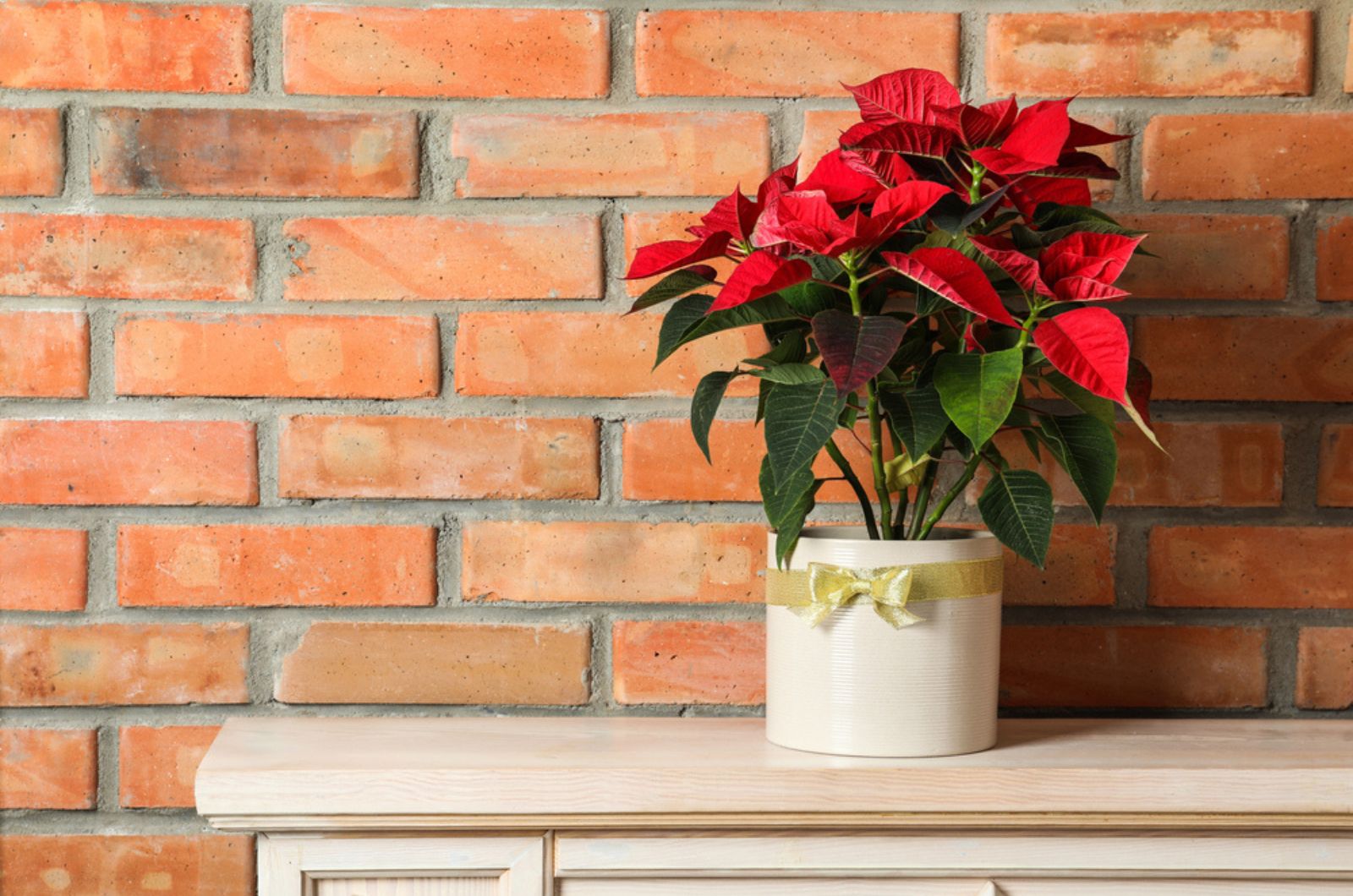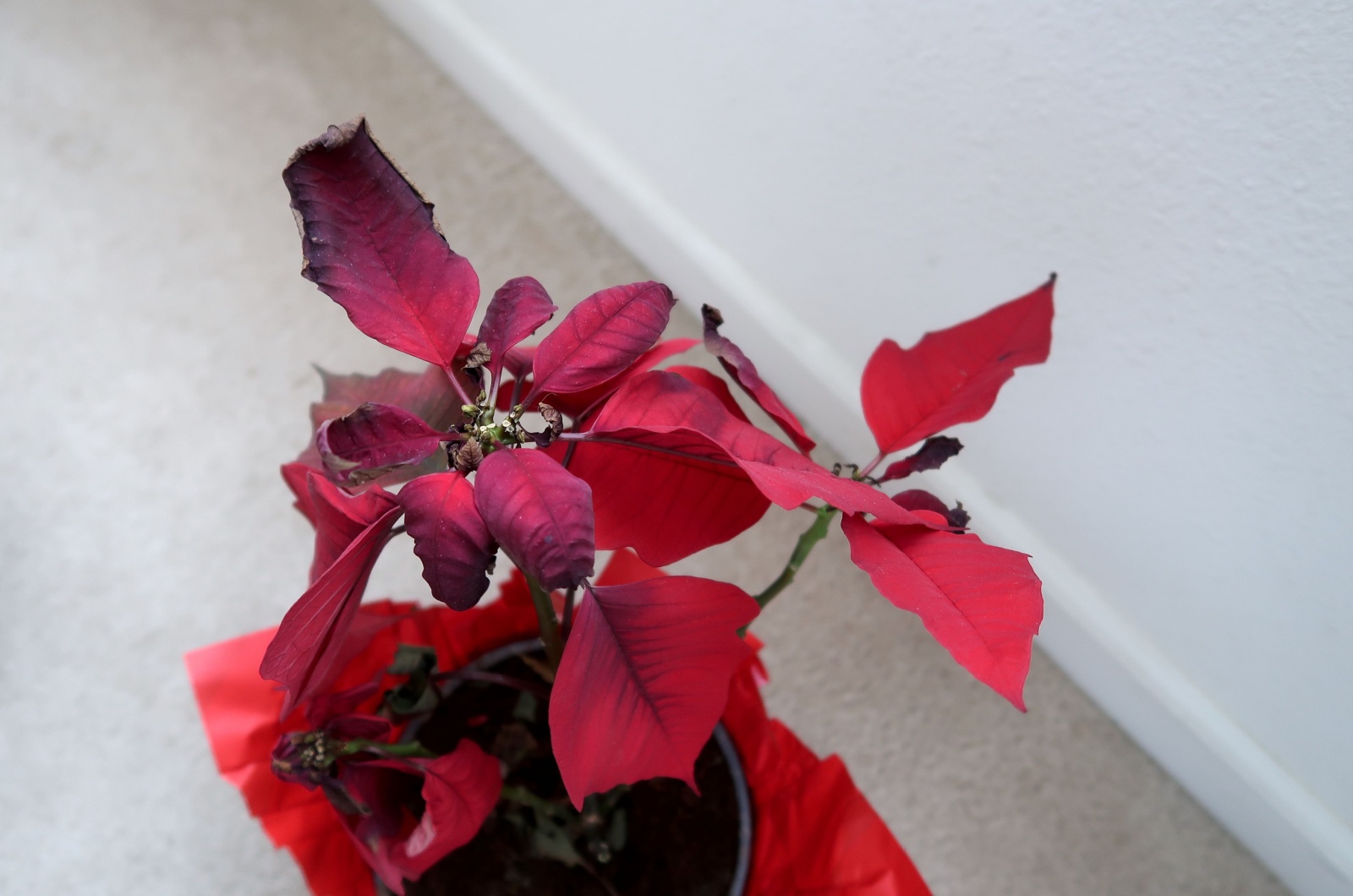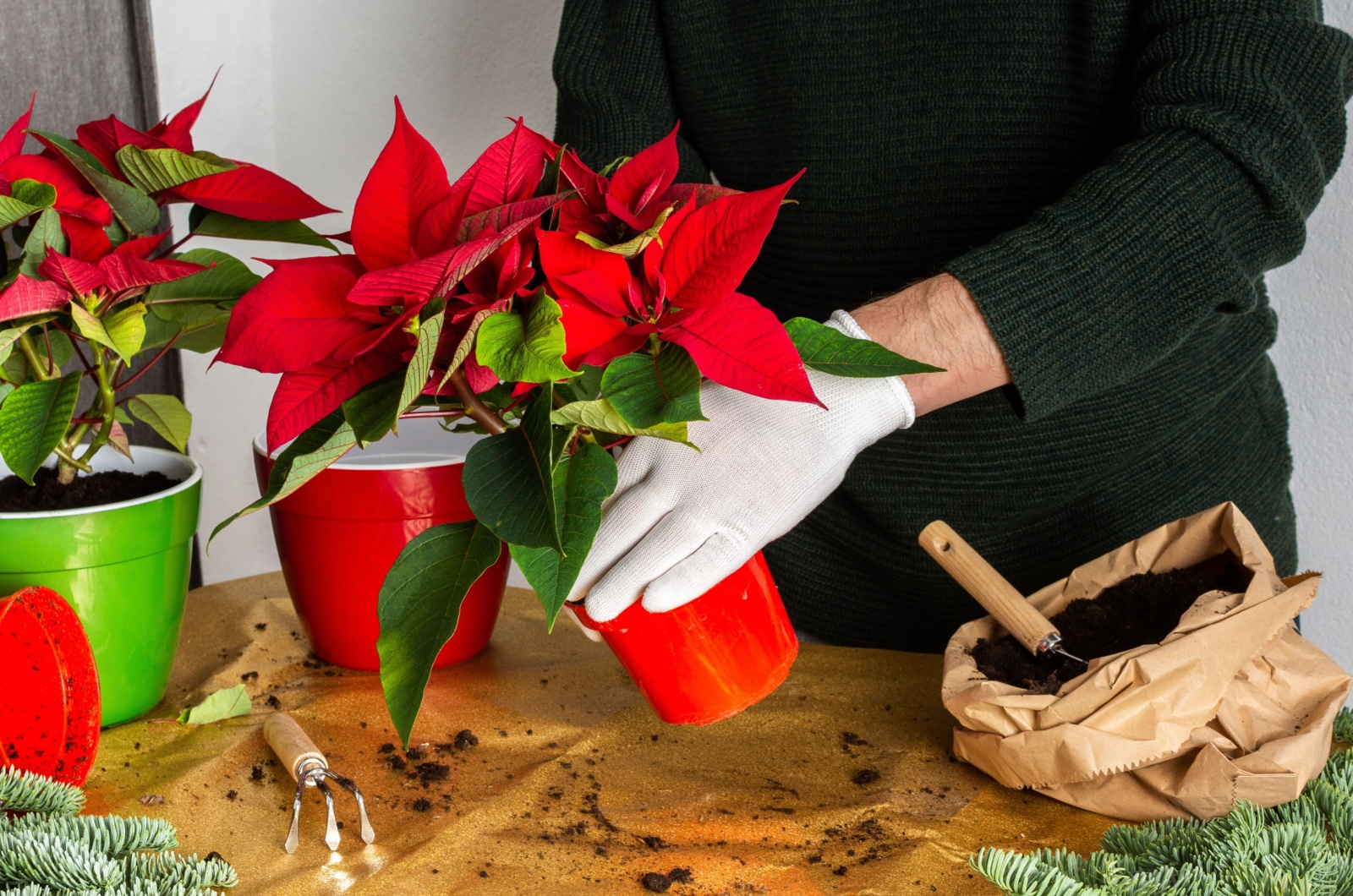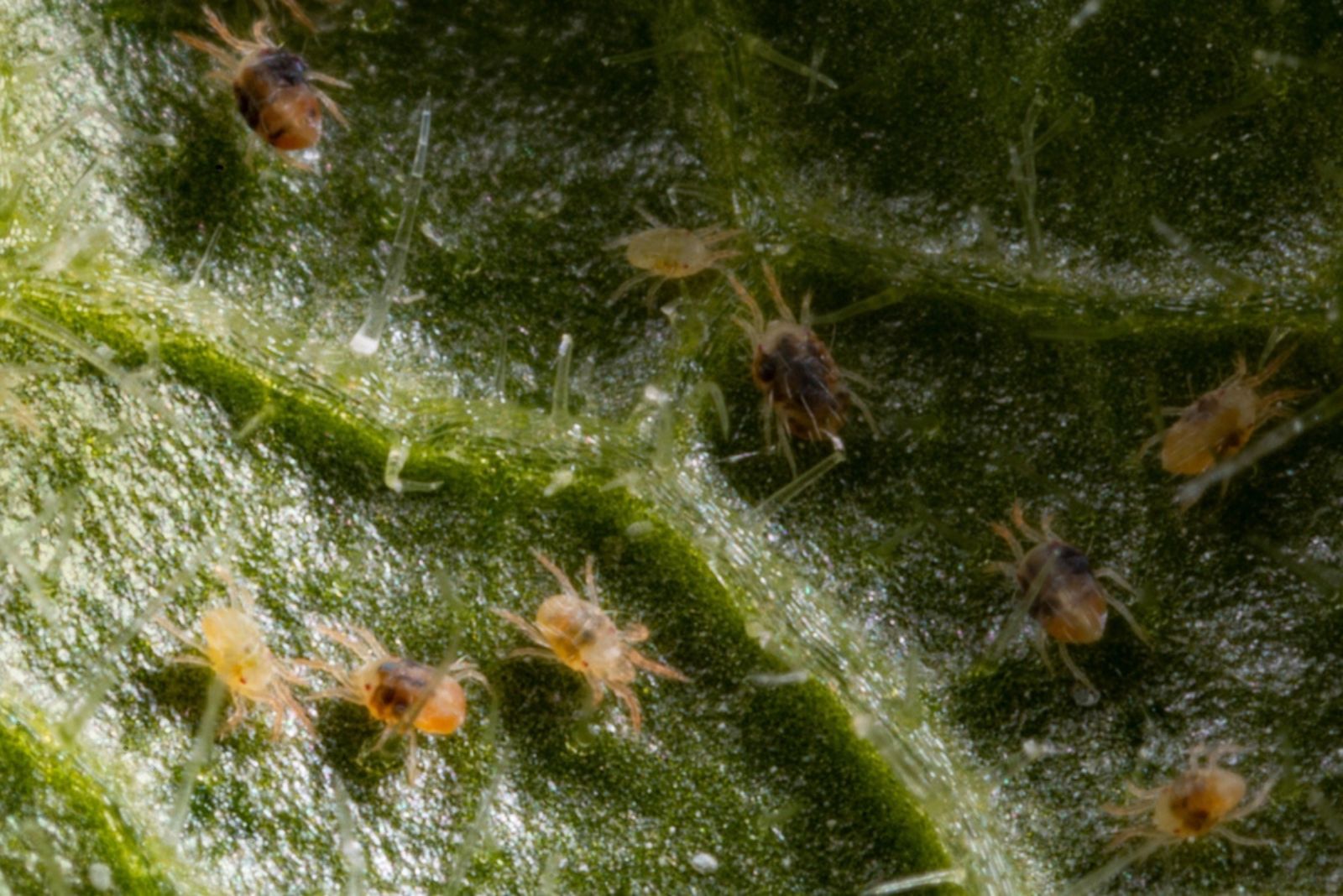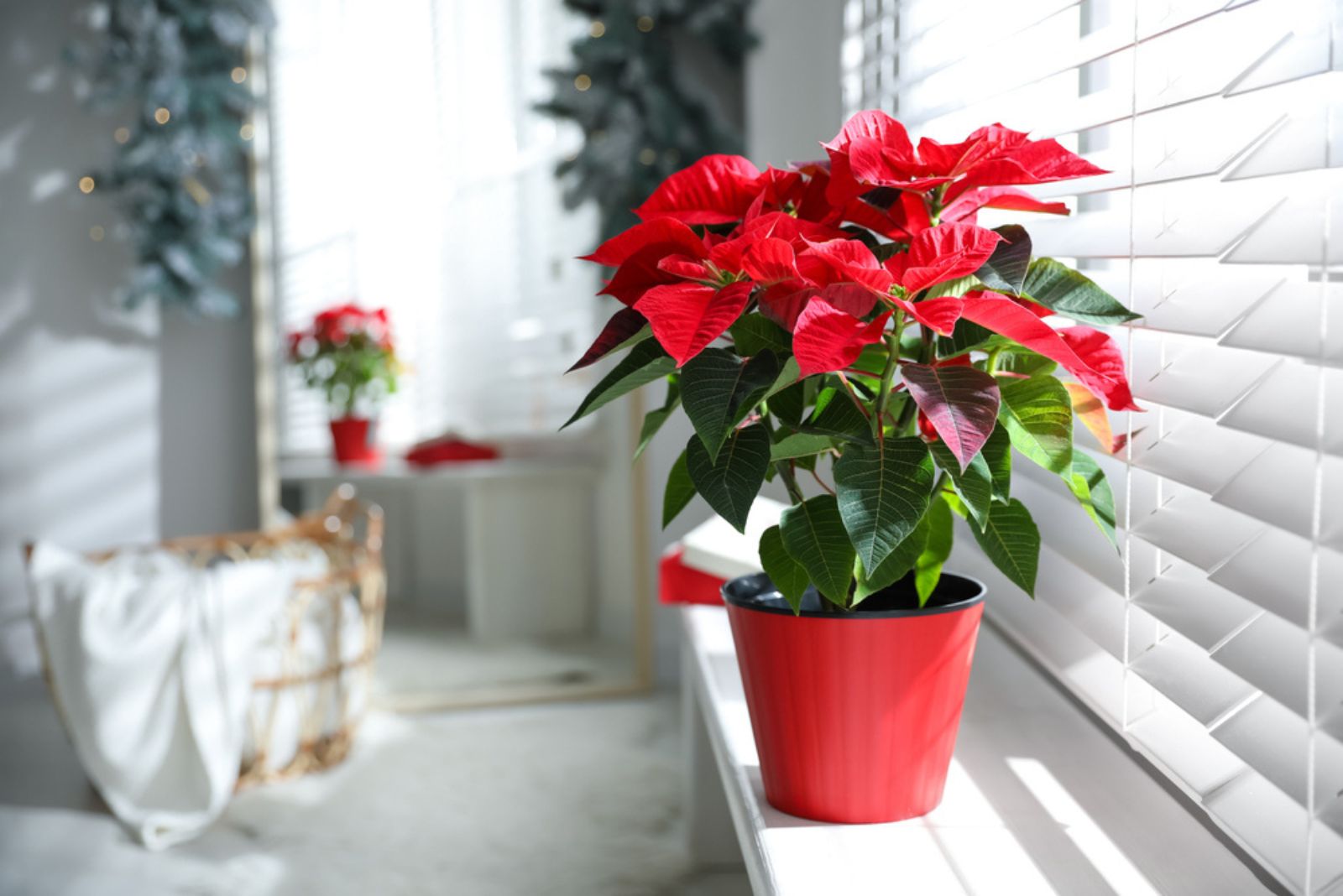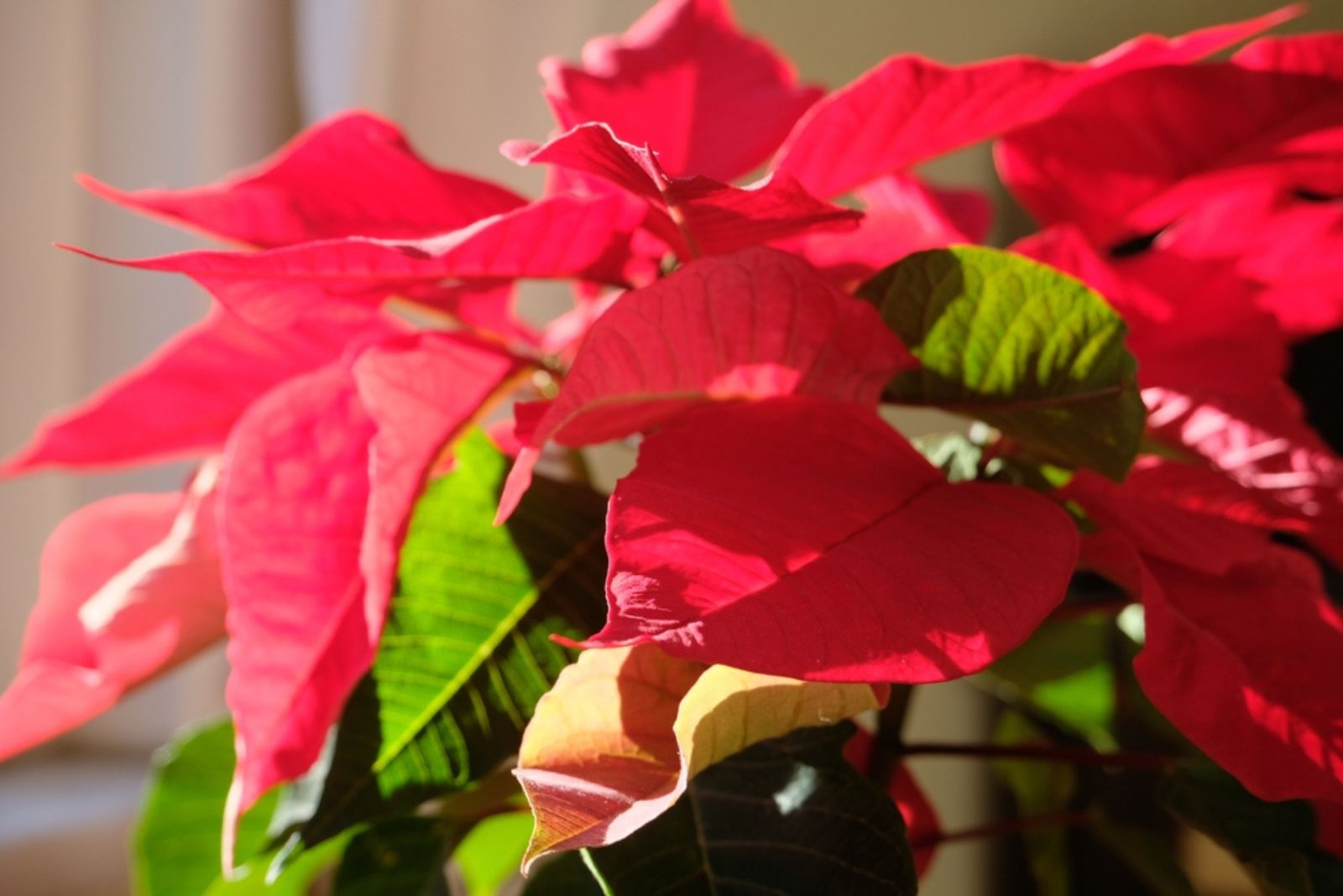Despite its festive allure and cheerful spirit, the Christmas poinsettia can face challenges that may lead to its demise. This leaves a lot of gardeners sad and confused, wondering what might have gone wrong with this sturdy and resilient holiday plant.
You’ve got questions, we have the answers. Let’s figure out how to keep your poinsettia happy and thriving all through the holiday season
Possible Causes
With the holidays just around the corner, you want to bring out your best Christmas plants for decorations. But what if your poinsettia is looking sad and droopy?
You need to figure out the causes first. Understanding and addressing these potential causes can significantly contribute to keeping your Christmas poinsettia thriving and vibrant throughout the holiday season.
#1 Buy A Healthy Poinsettia First
You’ve probably seen those beautiful poinsettias at the store, but picking the right one isn’t just about the color – it’s about the health of the plant.
A poinsettia with brown, wilting leaves or damaged petals may be a sign of stress, poor care, or pest problems that could make it harder to keep alive. Don’t be fooled by flashy decorations or a pretty pot; the health of the plant matters most when it comes to longevity.
Before making your purchase, check for vibrant green leaves, sturdy stems, and healthy-looking bracts (the colorful leaves around the flowers).
Avoid plants with broken stems, yellow leaves, or excessive wilting. If the plant is wrapped tightly in plastic, make sure it’s not holding too much moisture, as that can cause the roots to rot.
Remember, a healthy plant today will lead to a happier poinsettia in your home later on!
#2 A Watering Schedule Can Make Or Break Your Poinsettia
Poinsettias prefer soil that is consistently moist but not waterlogged. If the watering schedule is irregular or the plant is either too dry or too wet, it can lead to stress and decline. Finding the right balance and avoiding extremes is crucial for their health.
Always water from the top and wait until the soil starts drying out. The plant will more easily recover from dry conditions than from overwatering.
When watering your poinsettia, make sure that any excess water drains out of the pot. Water that sits at the bottom can quickly lead to root rot, which can seriously harm the plant.
Before watering, try sticking your finger about an inch into the soil to check how dry it is. This will give you a clearer idea of whether it’s time to water or if the plant is still okay.
It’s also important to use a pot with drainage holes. Without these holes, water can get trapped at the bottom, causing the roots to rot.
If you notice yellowing leaves or leaves dropping off, it’s a sign that the plant may be getting either too much or too little water. Adjust your watering schedule to make sure your poinsettia gets just the right amount!
Related: Is Watering Plants With Tea Such A Good Idea? Find Out Here!
#3 Find The Perfect Spot For Your Poinsettia
Although your poinsettia might look good on a mantelpiece or next to a fireplace, it’s not always a good idea to focus on home decor.
Plants require a certain amount of light and a specific temperature to be healthy and happy. If you place your plant on the side of a fireplace, the temperatures might be too hot to handle. Or the light might be too low for your poinsettia to grow and thrive.
Poinsettias grow well in bright, indirect light. Ensure they receive the appropriate amount of light for most of the day to keep them vibrant.
Avoid placing these holiday plants next to radiators or drafty windows. Too much direct sunlight or excessive heat can lead to wilting and leaf drop, while too little light can cause the plant to become weak and leggy!
#4 Too Much Fertilizer Can Stress Your Plant
It’s easy to think that more fertilizer means more vibrant flowers, but that’s not always the case with poinsettias. Too much fertilizer can actually lead to root damage and poor water absorption, leaving your plant stressed and sluggish.
If your poinsettia’s leaves start yellowing or dropping, it could be a sign that it’s had too much of a good thing. If you’ve been fertilizing a lot, it’s time to scale back.
Stick to feeding once a month, and make sure you’re following the instructions on the package. Your poinsettia will thank you with healthier growth and more vibrant blooms!
#5 Don’t Forget To Check Soil Quality
When your poinsettia’s soil isn’t up to par, it can spell trouble for your plant. Compacted soil or poor drainage means the roots struggle to get the oxygen and water they need. This can lead to root rot and a stressed-out plant that shows it with wilting leaves and poor growth.
Check your soil’s texture often. If it feels too dense or soggy, it’s time for a change. A well-draining mix helps your poinsettia’s roots breathe and prevents water from pooling at the bottom.
You can add some perlite or sand to improve drainage, giving your plant the best chance to thrive.
If you spot yellowing or browning leaves, it’s likely a sign that your soil isn’t in the best shape. Don’t wait – swap it out for fresh, well-aerated soil to keep your poinsettia strong and healthy for the holidays.
#6 Beware Of Common Pests Hiding On Your Plant
Even the most gorgeous poinsettia can fall victim to pests if you’re not careful.
Aphids, spider mites, and mealybugs are just a few of the common pests that love to hide on your plant. Their presence can stunt growth and cause leaves to curl or fall off. If you’re seeing more insects than usual around your poinsettia, it’s time to take action.
A gentle rinse with water can sometimes wash away smaller pests, but for a more persistent issue, you may need to use insecticidal soap or neem oil.
These options are both effective and safe, especially for indoor plants. Make sure to treat both sides of the leaves and check the stems too!
Regular inspections are crucial – don’t wait until your plant shows signs of damage. By keeping a close eye on your poinsettia, you can prevent a full-blown pest invasion and keep your plant looking beautiful all season long.
#7 Poinsettias Don’t Like Sudden Temperature Shifts
Poinsettias are so picky about their surroundings – it’s not just about light or water, but temperature too! If they experience sudden drops or rises in temperature, they’ll show their displeasure with wilting or yellowing leaves.
These plants can be a little dramatic when it comes to environmental changes, so you’ll want to give them a consistent, cozy space.
Avoid spots with sudden drafts or places near heating units. Poinsettias thrive when they’re in a room where the temperature remains steady. So, be sure to place them somewhere they won’t get an unwanted chill or a too-warm surprise.
Treat your poinsettia like a VIP guest – it needs a comfortable, steady climate to truly shine!
#8 Your Poinsettia Needs Some Humidity To Thrive
Poinsettias are tropical plants, which means they thrive in humid environments. When the air is too dry, especially during the winter when indoor heating kicks in, these beautiful holiday plants can quickly show signs of stress.
If your poinsettia’s leaves are dropping or curling up, it’s probably a sign that the air around it is too dry. These plants need just the right level of humidity to stay vibrant and happy.
One simple solution to increase humidity is to place your poinsettia on a humidity tray. Just fill a shallow tray with pebbles and water, then set your plant on top.
As the water evaporates, it creates a moist environment that will help your plant feel more at home. If you’re looking for a more consistent option, you could also try using a humidifier in the room to keep the air around your plant just right.
Avoid placing your poinsettia near vents, heaters, or drafty windows, as these areas can dry out the plant quickly. By maintaining the right level of humidity, your poinsettia will not only survive the winter but will thrive, continuing to bring those beautiful red leaves into the new year!
Also read: 6 Steps For Making A Poinsettia Flower Again
Now that you know what might be causing your poinsettia to wilt, it’s time to take action and bring back its holiday beauty!

